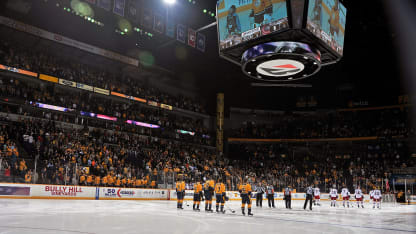So hockey officials are taking action with their NHL Green program. As part of that program teams have installed cutting-edge LED (light-emitting diode) arena lights, a technology that moved down the cost curve with U.S. Department of Energy (DOE) research and support.
For example, the host of the 2016 NHL All-Star Game, the Nashville Predators, replaced 247 metal halide lighting fixtures at Bridgestone Arena with some 120 ultra-efficient LED fixtures. One of six National Hockey League arenas that now have LED lighting, Bridgestone Arena and the Predators expect to save up to three-quarters of its lighting bills by ditching its metal halide lights installed 18 years ago.
But it does more than save on lighting. Heat from the old lights reached the ice, requiring more energy to prevent melting. The old lights took five minutes to warm up while LED lights turn on immediately, and they last much longer. Plus, LEDs cast a more natural light, enhancing the fan experience.
What works for ice hockey will work for just about everybody else, from homeowners to factories and office buildings.
Working with industry partners, DOE scientists have pioneered LED technologies that now cost barely 10 percent of what it took to buy and install in 2008. Top-performing 60-watt LED bulbs now consume 85-percent less energy than incandescent bulbs.
And markets have responded. Total installations of common home LED bulbs grew six-fold from
13 million in 2012 to 78 million in 2014
.
Even more cost savings happen during their lifetime. Each LED bulb has a general life expectancy of 25,000 hours before it needs replacing. Used six hours per day, this comes to 10 years. So the answer to the riddle of how many people it takes to change an LED bulb could be nobody because they last so long. And the energy savings could amount to $150 for that one LED light.
Industry and the DOE haven't finished yet. With continued research and development, LEDs will be even more affordable as they reach a projected 80 percent of all lighting purchases in the near future, saving Americans an estimated $26 billion a year in their electric bills.
Even more NHL teams are installing LED lightning systems to achieve their sustainability goals as part of NHL Green. As they shoot for this goal, NHL teams will slash carbon pollution, running up the score for themselves, their fans and, most important, our planet.


















